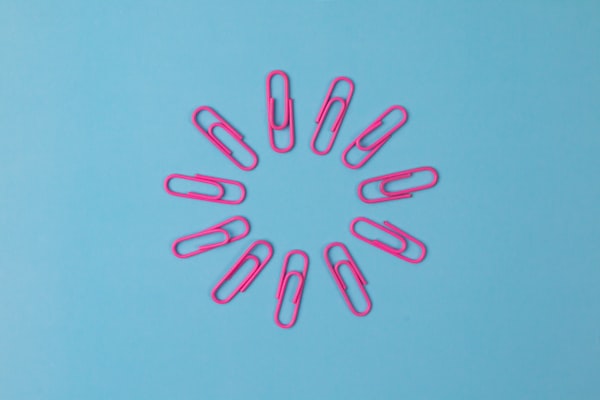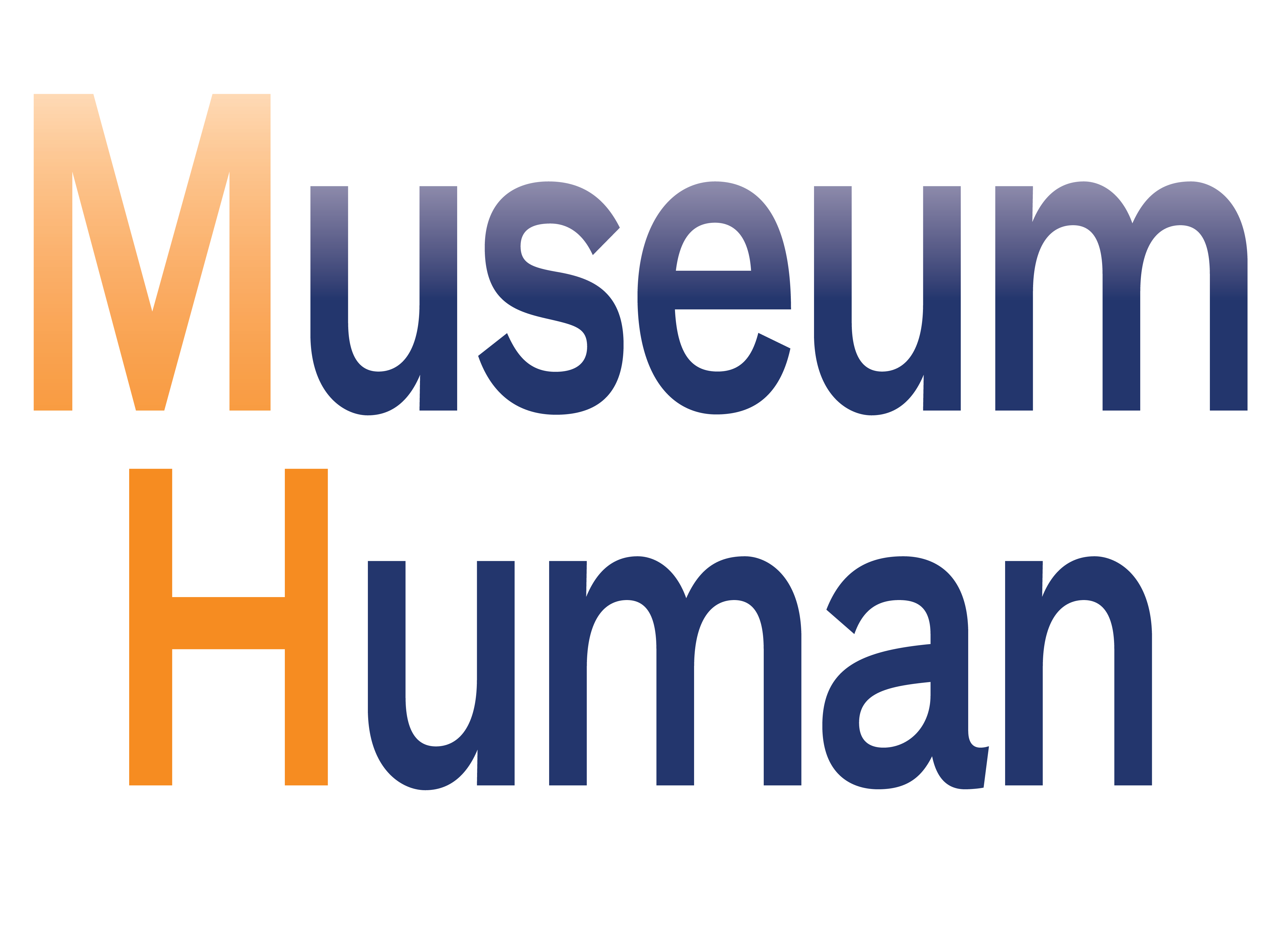
This week's links include optimistic leaders, maintaining cultures in hybrid workplaces, WFH burnout, and a tech titan reinventing the intranet.
It's a given that keeping a hybrid workplace connected—as well as they had been when working in the same physical location—is the next challenge facing museums. How does a place-based institution regain those "hallway and cafeteria conversations" which leaders always laud? (Just to be clear, I love those conversations, too—I just don't think it's worth schlepping into the building several days a week just for them. Are there other ways to get back that supposed creativity leaders claim we are now lacking?)
If you're reading this and not a subscriber to Museum Human, consider scrolling to the bottom and signing up now—it's free and is the only way to read the site's longer weekly post on the organizational culture of cultural organizations.
(And let's also be clear—in organizations with inclusion issues, many employees were not part of those conversations.)
I chose links for this week which attack the problem of hybridity in a few different ways, starting with a longer discussion about optimistic messaging from leadership.
First, though, here a few links following up on previous posts:
- Recalling last week's post about how museums can make an antiracist organization possible, here are two Harvard Business Review articles about how "diverse" boards don't just happen and how orgs can forge antiracist business strategies. Remember, museum workers, you can't hold people accountable if you don't try. (More links on the topic are here, here, here, and here.)
- Stowe Boyd's March 14 newsletter (if it's paywall, please consider subscribing—if you're at all interested in org culture this is one of the best investments you could make) delves into the paradox of culture fit (more here and here) versus belonging (also here and here, all links from Boyd's newsletter)—the former is often racist shorthand, the latter might represent a more earnest attept to make the org into a safe space, where all employees are part of those "hallway conversations." For museums, the important question is, can current employees—who feel they already belong—open themselves and the org up to new colleagues with whom they might not feel a natural "fit"? That's one of the many sacrifices privileged employees, most likely to be white, have to make.
- I also want to mention the Change the Museum Instagram account—it was the "I know I'm forgetting someone" group from the section where I listed some voices and resources to explore for antiracist inspiration.
- This HBR article here about how to develop data scientists across an organization made me think of my post on audience research for Kyle Bowen's SuperHelpful Letters and my follow-up here, on increasing staff participation in museum audience research. The situations aren't exactly the same, but I think it's a helpfully analagous situation.
Now on to hybridity …
From good old HBR comes an article on how leaders can create an optimistic culture (besides not laying off large numbers of people and then failing to reduce workloads). I'm not saying that enforced positivity is the way to go, but a bit of hope (and action) can accomplish a lot—if workers are given the autonomy and agency to take it from there.
This subhead sums it up: "Invite everyone to become a problem-solver, then give them room to fix things." The article continues:
More than a decade ago, Sara D. Sarasvathy published an influential study of how innovators and entrepreneurs actually get stuff done. The mythology, she argued, is that successful innovators predict a future others can’t see, develop a finely tuned plan to turn that future into reality, and attract the financial and human resources to back their efforts.
In reality, most change agents start with “who they are” (their “traits, tastes, and abilities”); use “what they know” (their “training, expertise, and experience”); and add “whom they know” (their “social and professional networks”). She calls this approach the “bird-in-the-hand principle.” Guided by this principle, she argues, starting a new venture or making things better “is no longer an incredibly risky act of heroism. It is something you can do within the constraints and possibilities of your normal life.”
Many articles have discussed the difficulty and importance of developing a culture of networks and relationships in a hybrid workplace, making sure that workers can derive strength from those they work most closely with (making hybridity an opportunity to develop new relationships), but I understand the point:
In times of unprecedented turmoil, there is an understandable temptation for leaders to bet the future on game-changing ideas: digital disruption, product reinvention, organizational transformation. All too often, though, leaders who champion futuristic ideas overlook the human and emotional connections that keep colleagues upbeat today.
Sharon Salzberg, a central figure in the field of meditation, works with caregivers, educators, and social-change activists — well-meaning people with aspirations to make a big difference. She urges these leaders to tend first to their “three feet of influence” — the clients, patients, people and teams closest to them. “Few people are powerful enough, persuasive, persistent, and charismatic enough to change the world all at once,” she argues. “The world we can most try to affect is the one immediately around us.”
This made me think of some of the discussions of how different countries tackled—or failed to—the covid pandemic, what can be gleaned from their responses beyond East Asia and Oceania very good, South Asia and sub-Saharan Africa good, Europe and North and South America bad. Is there an organizational vision which transcends individuals (an idea of "public health" as opposed to simply "medicine"; or, for museums, "how we all work together" as opposed to "who's most toxic today?")?
What this means for museums: in a hybrid workplace, leaders at all levels need to model behavior for workers to stay "close" to and engaged with their colleagues, wherever the worker is located at the moment. All museum workers should be encouraged to propose change where they can and to send this change—instead of value born of overwork—uphill in the organization. The question is, can leaders manage this without being the singular voice of the organization and with authentic transparency? Are leaders too worried about where their workers physically are to allow change to move forward?
The study of burnout born of distraction gained an added impetus during pandemic WFH, and this article from Quartz clarifies how remote workers suffer from the many tiny distractions which come with blending home and office mindsets. Perhaps some of the ideas in this HBR article about hybrid workplaces are worth considering: could hot-desking and movable locations help museum workers feel more energized when they are in the office? (I know the idea might be unpopular; as I wrote recently, silos can also provide solace, but these are times we might need to experiment.)
What this means for museums: leaders and HR execs alike need to understand that the new era of work, whether home, office, or hybrid, is more distracted, which provides another reason to eliminate the cult of busyness from their organizations.
I cite org culture guru Stowe Boyd almost as much as I do HBR—here he is on Microsoft Viva, an attempt by the workplace tech titan to evolve the organizational intranet.
What this means for museums: with their epic numbers of subcultures, is there a tech solution to better organizational information flow? And while it's not a stretch to think that a museum can reboot their intranet, the trick is to maintain it as a persistently useful resource for all workers. Might some degree of crowdsourcing be the answer? What about giving more staff the skills and time to help keep their colleagues informed? Don't expect, or leave it to, HR or IT to solely manage the intranet. I'd still rather trust people than just software.
If you're reading this and not a subscriber to Museum Human, consider signing up for a free subscription below—it's the only way to read the site's longer weekly post on the organizational culture of cultural organizations. Thank you for reading!
cover image by Tamanna Rumee on Unsplash [description: a circle of paper clips on a blue background]

This work by https://www.museumhuman.com/links-of-the-week-march-16-2021-this-ones-optimistic/ is licensed under a Creative Commons Attribution-NonCommercial-ShareAlike 4.0 International License.






